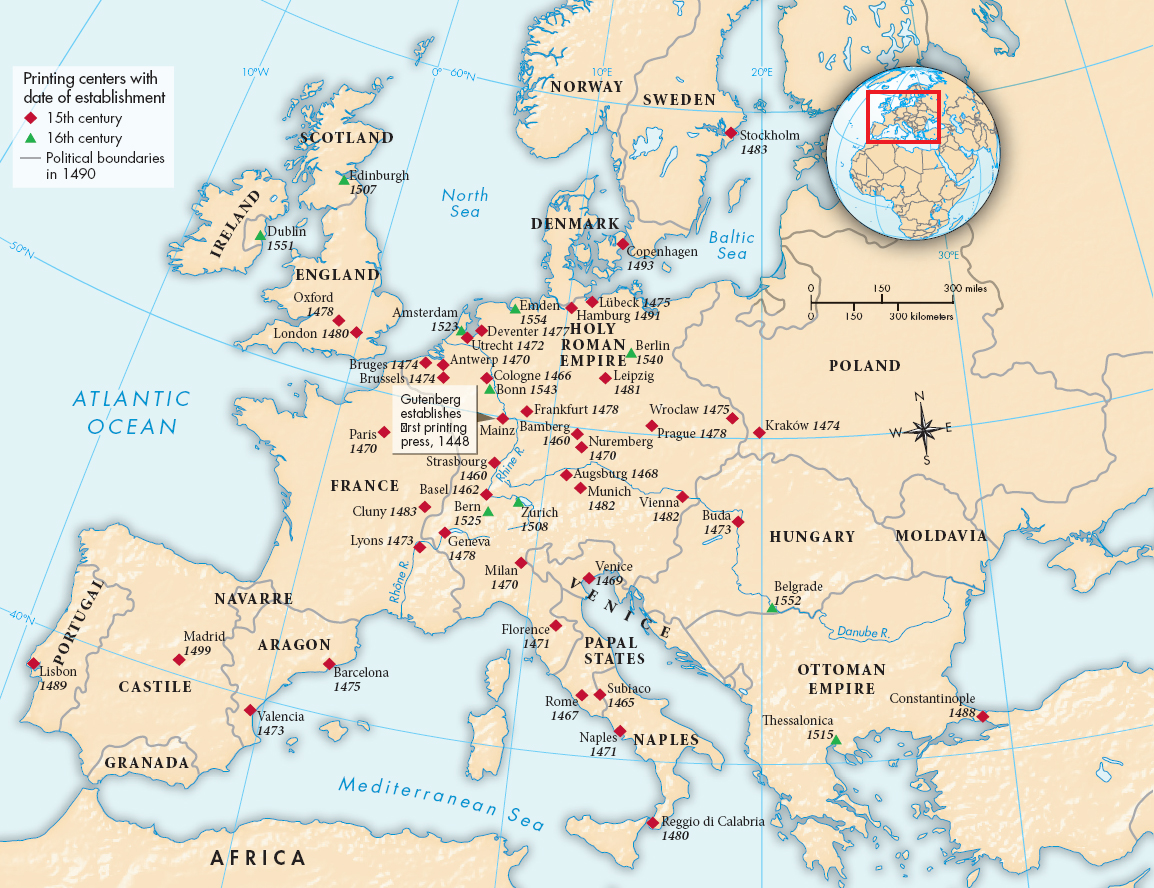The Printed Word
The fourteenth-
Printing with movable metal type developed in Germany in the 1440s as a combination of existing technologies. Several metalsmiths, most prominently Johann Gutenberg, recognized that the metal stamps used to mark signs on jewelry could be covered with ink and used to mark symbols onto a surface in the same way that other craftsmen were using carved wood stamps to print books. (This woodblock printing technique originated in China and Korea centuries earlier.) Gutenberg and his assistants made metal stamps — later called type — for every letter of the alphabet and built racks that held the type in rows. This type could be rearranged for every page and so used over and over.
The printing revolution was also made possible by the ready availability of paper, which was produced using techniques that had originated in China. Unlike the printing press, however, papermaking technology had been brought into Europe through Muslim Spain rather than developing independently.
By the fifteenth century, the increase in urban literacy, the development of primary schools, and the opening of more universities had created an expanding market for reading materials (see Chapter 11). Gutenberg was not the only one to recognize the huge market for books, and his invention was quickly copied. Other craftsmen made their own type, built their own presses, bought their own paper, and set themselves up in business (Map 12.2). Historians estimate that, within a half century of the publication of Gutenberg’s Bible in 1456, somewhere between 8 million and 20 million books were printed in Europe. Whatever the actual figure, the number is far greater than the number of books produced in all of Western history up to that point.

CONNECTIONS: Printing was developed in response to a market for reading materials. Use Maps 10.2 and 10.3 to help explain why printing spread the way it did.
The effects of the invention of movable-
Printing also stimulated the literacy of laypeople and eventually came to have a deep effect on their private lives. Although most of the earliest books and pamphlets dealt with religious subjects, printers produced anything that would sell. They printed professional reference sets for lawyers, doctors, and students, and historical romances, biographies, and how-
>QUICK REVIEW
How did liberal arts education reflect humanist values and beliefs?